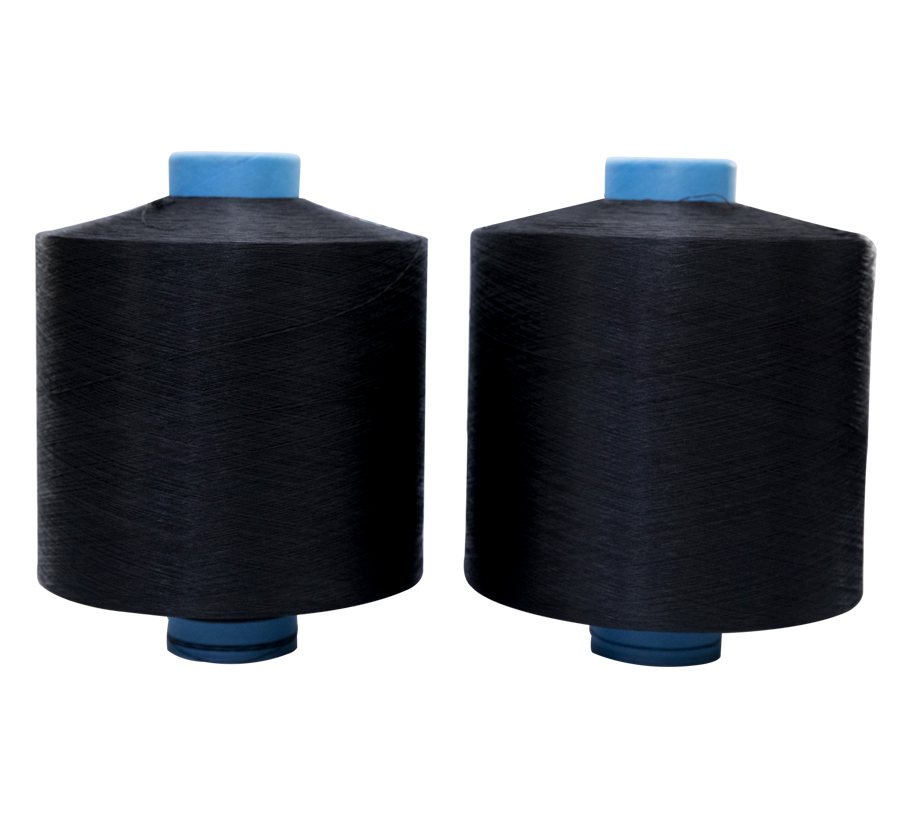Pink/Rose Red/Red China 150D/48F Dty Polyester Yarn High Strength AA Grade Textu...
See Details
Whether you are knitting a scarf or a sweater, a high elastic yarn can give you a lot of comfort. It also helps to keep your garments looking great. These yarns can be made from Angora, Mohair, and Polypropylene.
Polypropylene
PP high elastic yarn is a great choice for many different applications. It provides a great degree of strength, comfort, and durability. It is also very resistant to water, chemicals, and ultraviolet light. This makes it a great choice for clothing, sportswear, and other textiles.
It is the lightest polymer used in the textile industry. It has a low density, low moisture absorption, and minimal thermal conductivity. It is also flame retardant.
Polypropylene fiber is made by polymerization of propylene as a linear polymer. It is then extruded through a spinneret to create threads. Polypropylene is not dyed after the extrusion process. The fiber has a 150degC softened melting point.
The molecular structure of PP contains a pendant group of CH3. The fibers have a tenacity of 4.5 to 6.0 g/d, depending on the type of fiber. Typical textile applications include nonwovens, carpets, and sportswear.
Polypropylene is the fourth largest variety of synthetic fiber. It has a molecular structure that contains a pendant group of CH3 and polar functional groups. These groups can operate as chemical bond combinations with dye molecules, affecting dyeability.
There are many different types of polypropylene yarn available. They can be twisted, textured, or spun. Polypropylene high elastic yarn is also available in different colors and textures. Polypropylene yarn is used in various applications, including socks, carpets, ropes, and home textiles. It is also used as a substitute for acrylic yarns.
Angora
Angora is a luxury animal hair fiber. It is often blended with other fibers such as sheep wool or yak to enhance the bulk and stretch of the final product. The fiber is often used in textiles like knitwear and scarves.
Angora is harvested from the undercoat and guard hairs of the Angora rabbit. These are soft, hollow fibers that are very silky. This type of wool is for luxury textiles like fine lace patterns and knitted garments.
There are five grades of angora fiber. The finest grade is the longest and the second shortest fibers are harvested from the lower sides of the Angora rabbit. They are often carded or spun immediately after harvesting to improve the quality of the fiber.
Although angora is expensive, it is a wonderful fiber for knitting and felting. It is durable, silky, and is easily dyed. It adds a soft fluffy layer to garments and accessories.
Angora is often compared to cashmere, but there are major differences. Cashmere is a thicker fiber, while angora is a thinner fiber. Also, cashmere is more expensive than angora. Angora wool is used to make sweaters, suits, scarves, and decorative items.
Angora is also available in many colors. Most angora products contain up to 20% sheep wool.
Angora rabbits are kept by small farmers. They are plucked four times a year and sheared. The rabbits produce guard hairs that can be used as a soft undercoat. They are also highly water absorbent.
Mohair
Whether you're interested in the latest trends in knitting, crochet, or sewing, there are several reasons to consider mohair high elastic yarn. This type of fabric is known for its durability, luster, and softness. And, like silk, it is resistant to dyes.
While mohair is commonly used in knitwear and coats, it can also be found in home decor and home furnishings. Its lightweight and non-flammable properties make it an choice for home furnishings, particularly for those in hot climates.
Mohair is usually blended with other fibers, such as elastomeric fibers that help keep the fabric supple and movable. Some mohair is also mixed with super-fine synthetic fibers.
When it comes to choosing the mohair, you'll want to consider the amount of silk content. Some yarns contain a silk core, which adds a nice glimmer to the fabric.
If you're looking for a more economical option, Kidsilk Haze might be a good choice. Kidsilk is sourced in a cruelty-free environment, and is a great choice for small projects.
Mohair yarn is also available in a variety of different colors and textures. You'll want to test the yarn on a swatch to get an idea of the yarn's properties.
If you're looking for the mohair, you'll want one that has a nice sheen, but is not too fluffy. Kid mohair is typically more expensive, and is produced by younger goats.
